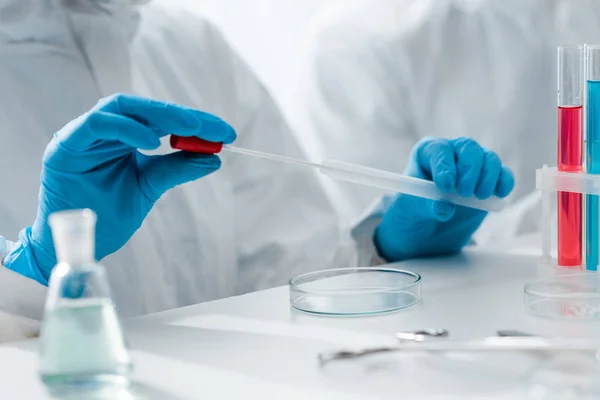Genetic genealogists employ DNA testing to solve family history questions and resolve cold cases. They employ autosomal, Y the chromosome and mitochondrial (mtDNA) tests.
MtDNA can be found within mitochondria in cells. Only females can transmit this DNA to their descendants. YDNA is handed down to males via their fathers.
Role of DNA in Ancestral Roots
The most popular form, genetic genealogy involves those who test their DNA, as well as performing traditional genealogy research to find family members who have been lost for a long time. It’s become increasingly popular recently due to improved DNA testing technology and the accessibility of test at-home kits.
Using publicly available genetic genealogy databases, crime scene DNA from an unknown suspect may be uploaded to the database and it can be compared with other profiles. If a match is detected then it’s possible to determine what branch of the family tree the person is a part of to based on their shared DNA.
This type of forensic DNA testing has been successful in identifying many undetected murders, sexual assaults and other crimes of violence. Also, it is being used to find missing persons and help families find closure.

Genetic Genealogy and DNA Testing
Genetic genealogy, which combines DNA analysis with traditional genealogy and historical research can help break through the bricks for researchers conducting studies on family histories. For investigators working in forensics they can use tools to locate missing individuals and to solve mysteries.
The forensic applications of genetic genealogy emerged from the direct-to consumer DNA testing trend that took over the world a decade ago, when companies such as 23andMe and Ancestry offered customers an opportunity to spit into tubes and get information about their ethnicity and medical history as well as family connections.
The same technology can use in a criminal situation to link crimes with DNA the profiles of databases that are public, for example, GEDmatch. An exact genetic match can provide a starting point for investigators when they are establishing an ancestral tree.
Y DNA and Paternal Genealogy
Men are born with a different DNA structure than women. DNA testing for Y-DNA could reveal paternal direct lineage that dates back hundreds, or perhaps thousands of years. DNA tests looking at Y’s look for a number of repetitive sequences known as STR markers located on the Y the chromosome. The values of these markers are exclusive for each male, and may be used in surname or project on geography to evaluate the other males. A few (harmless) variations can aid in defining specific branches.
Since only males with genetic DNA have a Y chromosome, genetic males are only able to be able to take a test for Y-DNA. But females wanting to discover their paternal lineage can sponsor their father, cousin or paternal uncle to take testing Y-DNA. The majority of companies providing the test offer the Family Finder feature in their results. This feature allows you to connect you with living relatives who belong to the same paternal haplogroup.
mtDNA in Maternal Ancestry
Maternal lineage DNA xet nghiem adn ha noi analysis, as performed through mtDNA tests, may identify female connections to family members which aren’t found by paternal testing or any other tests for autosomal DNA. The mtDNA content of people living today does not change over time, which is why tests based on mtDNA can offer accurate genetic markers that can trace the maternal lineage.
Until recently, researchers believed that mtDNA passed to daughters via processes inside eggs that enveloped paternal mitochondria following sperm penetration into the egg. But now it’s thought that mtDNA may actually be transferred between mothers and daughters without the need for a penetrating event.
Numerous companies offer tests for mtDNA. Certain, such as 23andMe analyze only the HVR1 or HVR2 regions in mtDNA however, others, like Family Tree DNA, test for the entire mtDNA sequence and also provide cousin matching. The tests are able to help you locate your maternal haplogroup and identify the general areas of the globe from which your ancestors originated.
Autosomal DNA Testing for Family Connections
DNA testing can help people discover his genetic ties to several ancestral communities. Autosomal DNA tests could identify potential relatives either on the paternal or maternal sides that are part of the family tree.
As well as identifying distant relatives In addition, these tests may help you understand the geographic region where your ancestors originated. These regions are determined by the frequencies of specific DNA variations in the reference population across the globe.
Another well-known use of DNA testing is the identification of undetected human remains. For this, researchers remove DNA from the scene and then match it to public DNA databases, such as GEDmatch. An accurate match may aid investigators in constructing an ancestral tree, and also identify the suspect. The analysis of the themes revealed that individuals’ beliefs about the concept of identity are often challenged with unexpected DNA results. Particularly, the finding of biological kinship prompted a reconsideration of gender, racial as well as familial identities.